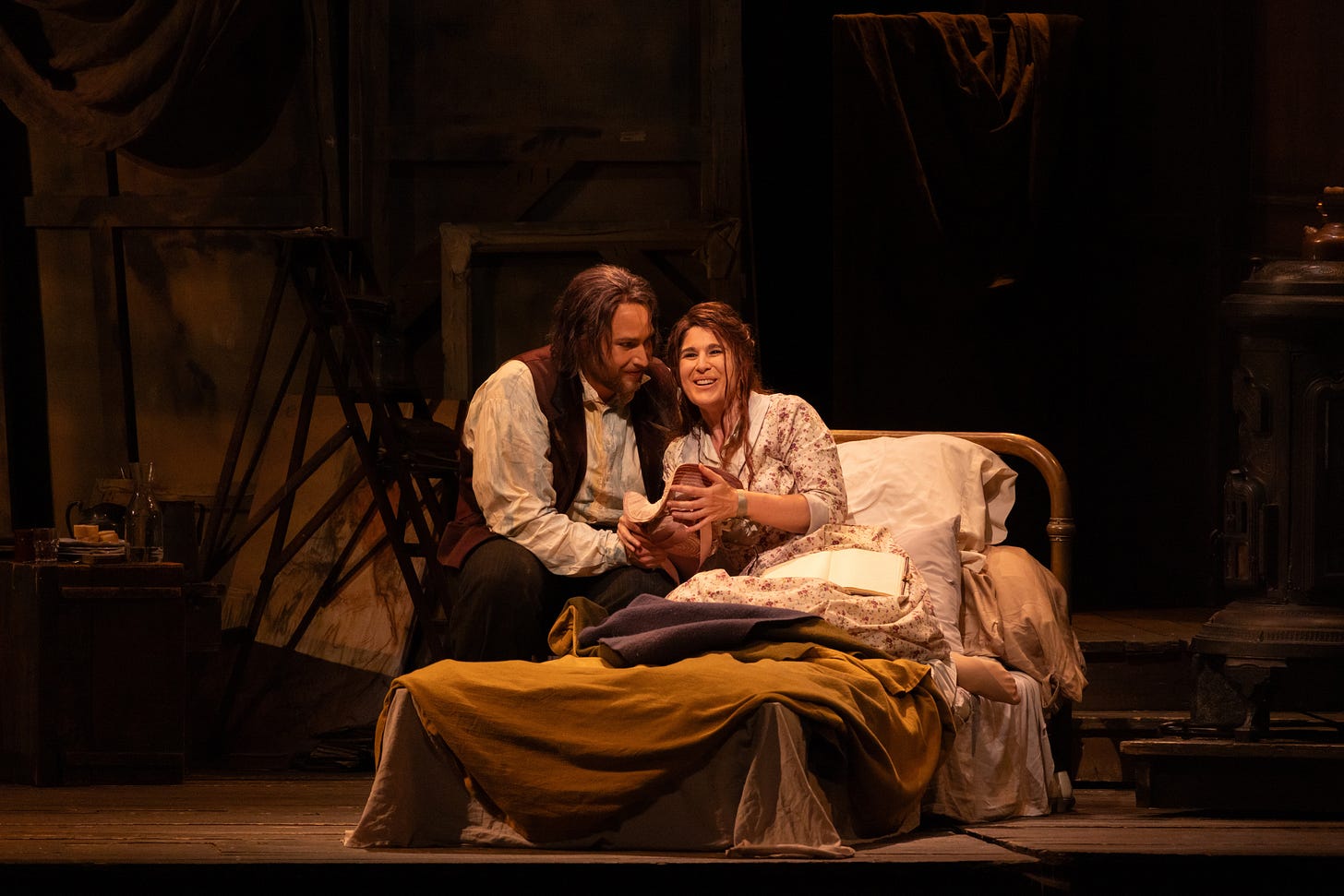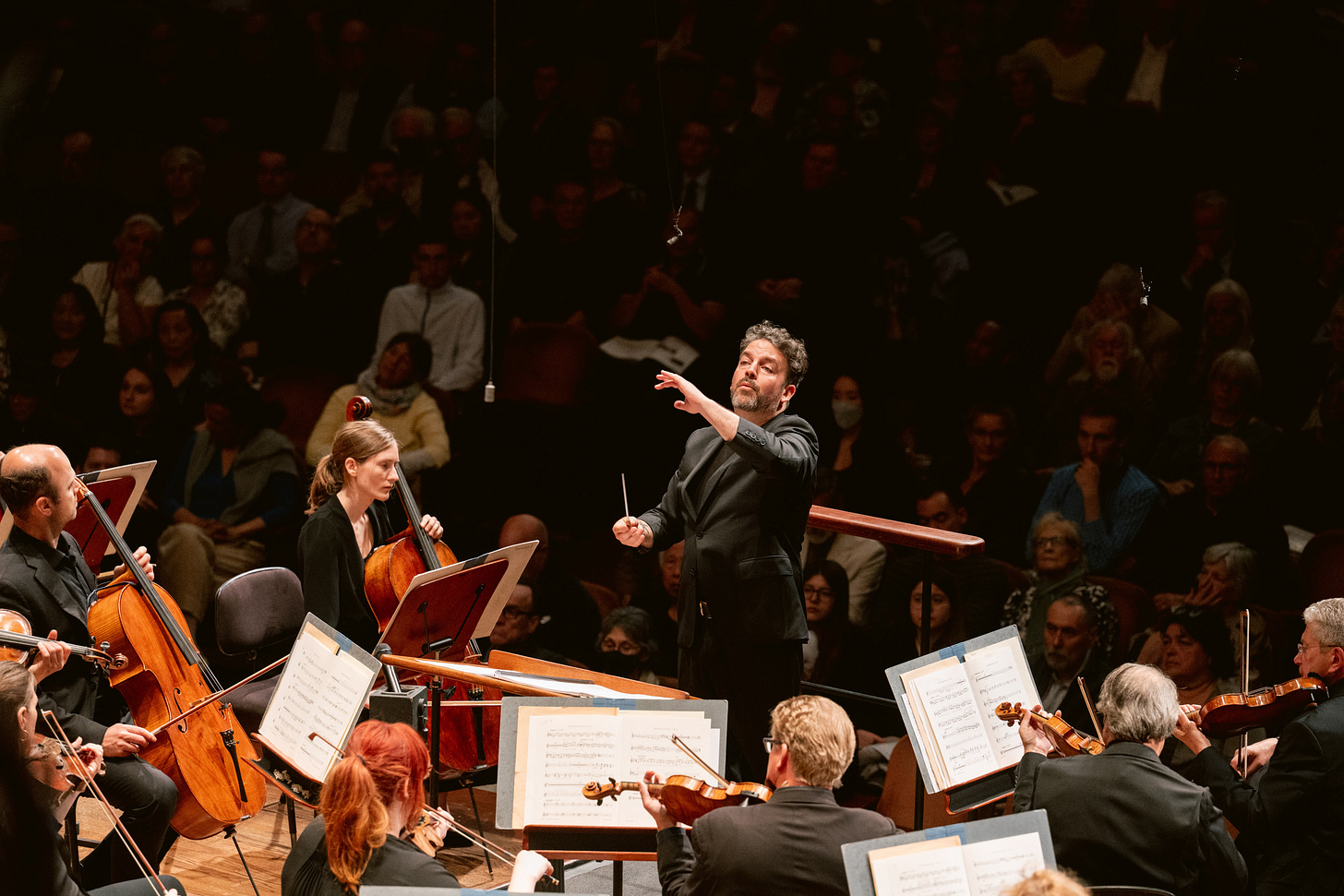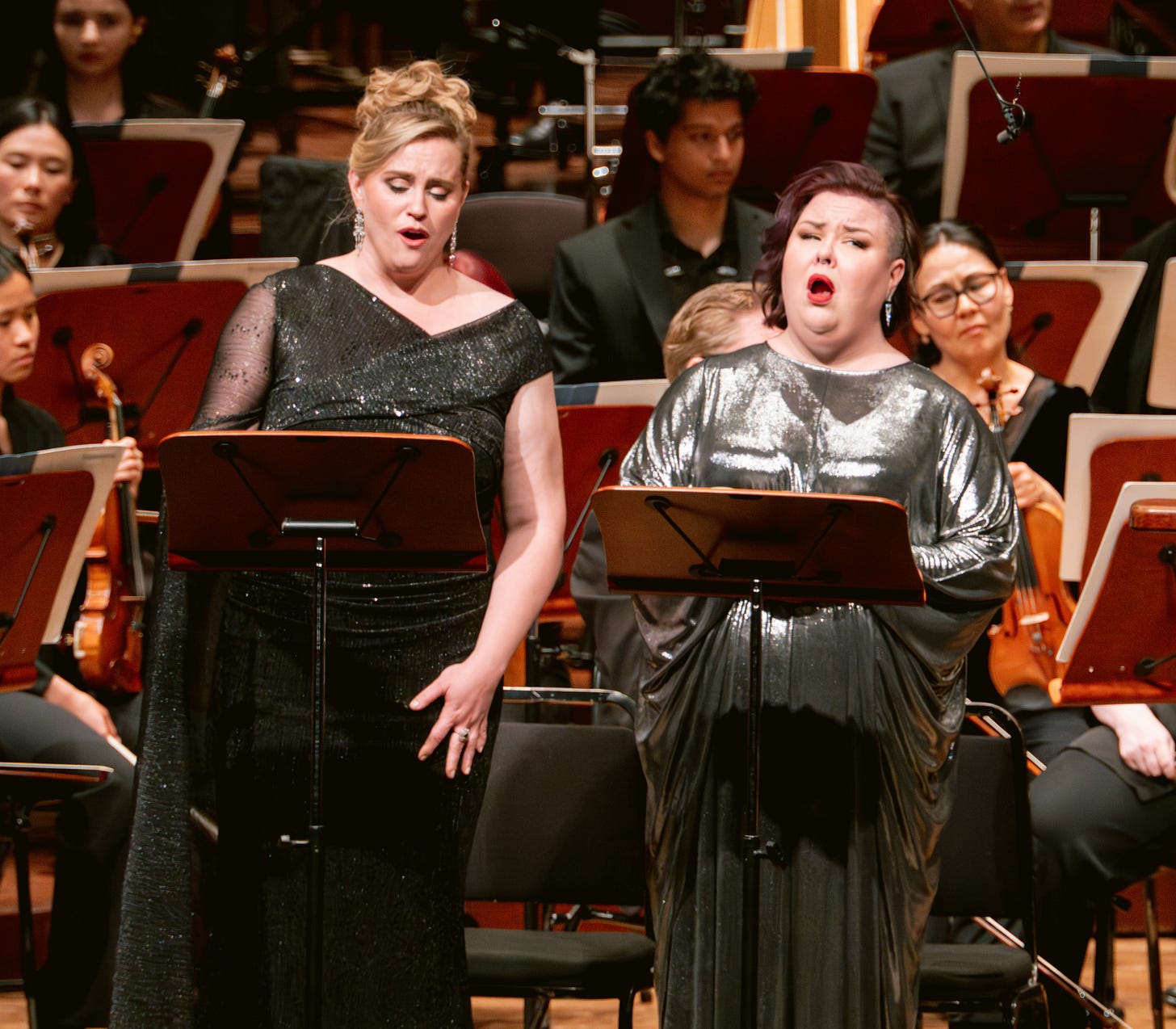
There wasn’t too much going on this past week on the musical front, and perhaps that was just as well. After the tumultuous and heartbreaking spectacle of Esa-Pekka Salonen’s departure, which marked the end of the concert season as traditionally reckoned, it was good to take a little breather and try to regroup. Summertime music will be along soon enough.
It's not as though the halls were quiet, though. The San Francisco Opera’s summer season steamed ahead toward the culminating Pride Concert slated for this Friday, and the San Francisco Symphony eked out one little appendage to its season, about which more below.
I returned to the War Memorial Opera House on June 18 to hear the second cast of La Bohème, and largely enjoyed myself. It wasn’t quite a full changeover — baritone Will Liverman, who had been scheduled to make his company debut as Marcello, withdrew shortly before his first appearance citing unspecified “personal reasons.” You never know quite what that means, because sometimes it actually means personal reasons, and when it doesn’t, it’s an opera company’s most ironclad way of saying “none of your damn business.” But I was disappointed, because my previous encounters with Liverman — most recently as the soloist in Shawn Okpebholo’s great oratorio Two Black Churches with the Oakland Symphony — had left me eager for more.
Instead, Lucas Meachem, who had been a wonderful robust Marcello on opening night, did the whole run, and did it with his customary distinction. He was joined by tenor Evan LeRoy Johnson — still remembered in certain circles as the lone bright spot in the company’s dreary centennial production of Eugene Onegin — as a fluid, fresh-toned Rodolfo. Soprano Nicole Car played Mimì with a girlish ebullience that bothered some observers but charmed me, and soprano Brittany Renee brought earthy vitality to the part of Musetta.
Really, I had only two beefs. One was, again, with Ramón Tebar, whose conducting remained as mannered and boneless as it had been on opening night. The other was with whichever creative figure — director, designer, whoever — had thought, You know what would be kicky fun? If Rodolfo and Marcello had the same costume and hairstyle! I can’t imagine what the point of this decision was, but the effect was obvious: It was well-nigh impossible to tell the two male leads apart. The problem hadn’t been as obvious the first time around, because Pene Pati is always delightfully and unmistakably Pene Pati. But for the second cast I’d brought some friends who were operatic first-timers — Bohème is the perfect starter opera, after all — and they spent the entire evening not entirely clear who Mimì was dating and who the other dude was. C’mon, don’t do that.
Makeup artists
Remember back in September when Esa-Pekka Salonen was supposed to conduct the Verdi Requiem and then the whole thing went up in flames? Yeah, I do too. So when the San Francisco Symphony added a pair of Requiem performances to the schedule late in the game, it seemed like a compensatory gesture: Bummer about the canceled programs, let’s take a mulligan.
Friday’s concert, conducted by James Gaffigan with an unpredictable blend of fervor and expressive opaqueness, was perfectly fine, aside from some short and undistinguished choral pieces by Gordon Getty that we need not delve into here. Jenny Wong’s Symphony Chorus didn’t quite attain the luster it had shown the week before during Salonen’s valedictory performances of Mahler’s Second, but it sounded forceful and precise, especially during the great “Dies Irae.” Among the vocal soloists, soprano Rachel Willis-Sørensen and bass Morris Robinson dispatched their assignments admirably, whereas tenor Mario Chang strained to give the “Hostias et preces tibi” solo the clarity or grace it required.
By contrast, there was mezzo-soprano Jamie Barton, who always, as the saying goes, understands the assignment, and delivered her role with an unstoppable combination of vocal power and expressive finesse; her account of the “Liber scriptus” had an almost unearthly eloquence. The entire evening still felt like an afterthought.
Elsewhere:
Michael Zwiebach, San Francisco Chronicle/SFCV: “Gaffigan’s conducting, however, emphasized drive and the titanic climaxes while shorting the Requiem’s poetic side. Certainly, this is a public religious work…But it’s not only theatrical. This interpretation was driven by inflexible tempos and a sameness to all of the climaxes and fortissimo outbursts that ultimately became wearing.”
Cryptic clue of the week
From Out of Left Field #273 by Henri Picciotto and me, sent to subscribers last Thursday:
Fires up section of concert orchestra (7)
Last week’s clue:
The first night in Paris with indigenous person (5)
Solution: INUIT
The first: I (as in Richard I)
night in Paris: NUIT
indigenous person: definition
Coming up
• Festival Opera: The venerable East Bay company takes its wares into the outdoors with the return of its Opera in the Park series. This summer’s offering is Leoncavallo’s Pagliacci, in an intimate, stripped-down version hosted by general director Zachary Gordin and featuring a cast headed by tenor Vincent Chambers, soprano Lila Khazoum and baritone Igor Vieira. June 26, Orinda Community Park; June 29, Civic Park, Walnut Creek. www.festivalopera.org.
• Merola Opera Program: Alumni of the Merola Opera Program, assuming their careers go as planned, are likely to devote most of their time and energy to opera. But song is a special division of the vocal arts, with its own artistic demands and traditions, and it’s appropriate for this summer’s programming to begin with an evening dedicated to both art songs and popular songs. “A Grand Night for Singing,” curated by Ronny Michael Greenberg, showcases six young singers and five pianists in music by Charles Ives, Cole Porter, Leslie Adams, and more. June 26, San Francisco Conservatory of Music. www.merola.org.








In the program article, "They Call Me Mimi" by Louise Guinther pg. 38 col. 2 par. 1 Guinther asks each soprano how she approaches Mimi. Karen Chia-ling Ho avoids referring to performances of the past, saying she wants to know "the shape of the music" and do exploration by herself. Nicole Car and Caroline Corrales both like Mirella Freni's approach (so do I) and Corrales refers to SF Opera's recording with Pavarotti and Freni as her favorite. I played that recording and remember Pavarotti and Freni sounded beautiful, but the nice young conductor just followed everyone, causing some tempos to stretch more than usual. Pavarotti was at the height of his fame then, so that recording became popular and I still hear influences of it. I saw this current production with Ho and Pati and loved it, but remember playing it with Patane, Bartoletti, and Arena among other conductors and think Act 4 could be just as strong and Puccini's rhythms more effective with steadier tempi.
Wish I could enjoy all the music there. In any event, I enjoy reading your columns.